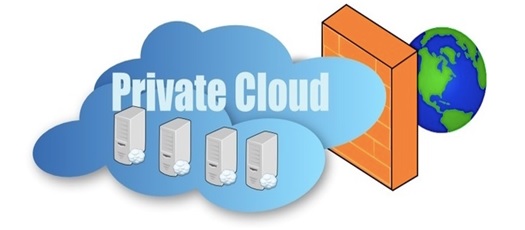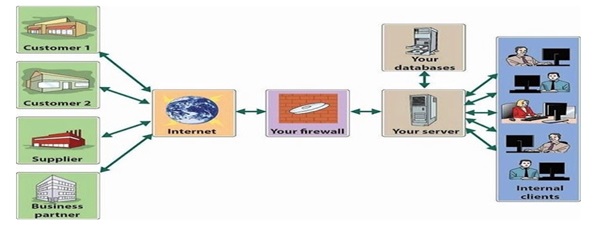Home »
Cloud Computing
Glimpse of Private Cloud in Cloud Computing
In this article, we are going to learn about Glimpse of private cloud in Cloud computing.
Submitted by Aleesha Ali, on April 04, 2018

Public clouds are appealing and provide a viable option to cut IT costs and reduce capital expenses, but they are not applicable in all scenarios. For example, a very common critique of the use of cloud computing in its canonical implementation is the loss of control. In the case of public clouds, the provider is in control of the infrastructure and, eventually, of the customers’ core logic and sensitive data. Even though there could be the regulatory procedure in place that guarantees fair management and respect of the customer’s privacy, this condition can still be perceived as a threat or as an unacceptable risk that some organizations are not willing to take. In particular, institutions such as government and military agencies will not consider public clouds as an option for processing or storing their sensitive data. The risk of a breach in the security infrastructure of the provider could expose such information to others; this could simply be considered unacceptable.

In other cases, the loss of control of where your virtual IT infrastructure resides could open the way to other problematic situations. More precisely, the geographical location of a data center generally determines the regulations that are applied to the management of digital information. As a result, according to the specific location of data, some sensitive information can be made accessible to government agencies or even considered outside the law and other agencies with virtually limitless powers to access information, including that belonging to any company that stores information in the U.S. territory. Finally, existing enterprises that have large computing infrastructures or large installed bases of software do not simply want to switch to public clouds, but they use the existing IT resources and optimize their revenue. All these aspects make the use of a public computing infrastructure not always possible. Yet the general idea supported by the cloud computing vision can still be attractive.
Private clouds are virtual distributed systems that rely on a private infrastructure and provide internal users with dynamic provisioning of computing resources. Instead of a pay-as-you-go model as in public clouds, there could be other schemes in place, taking into account the usage of the cloud and proportionally billing the different departments or sections of an enterprise. Private clouds have the advantage of keeping the core business operations in-house by relying on the existing IT infrastructure and reducing the burden of maintaining it once the cloud has been set up. In this scenario, security concerns are less critical, since sensitive information does not flow out of the private infrastructure.
More specifically, having an infrastructure able to deliver IT services on demand can still be a winning solution, even when implemented within the private premises of an institution. This idea led to the diffusion of private clouds, which are similar to public clouds, but their resource-provisioning model is limited within the boundaries of an organization.
Advertisement
Advertisement